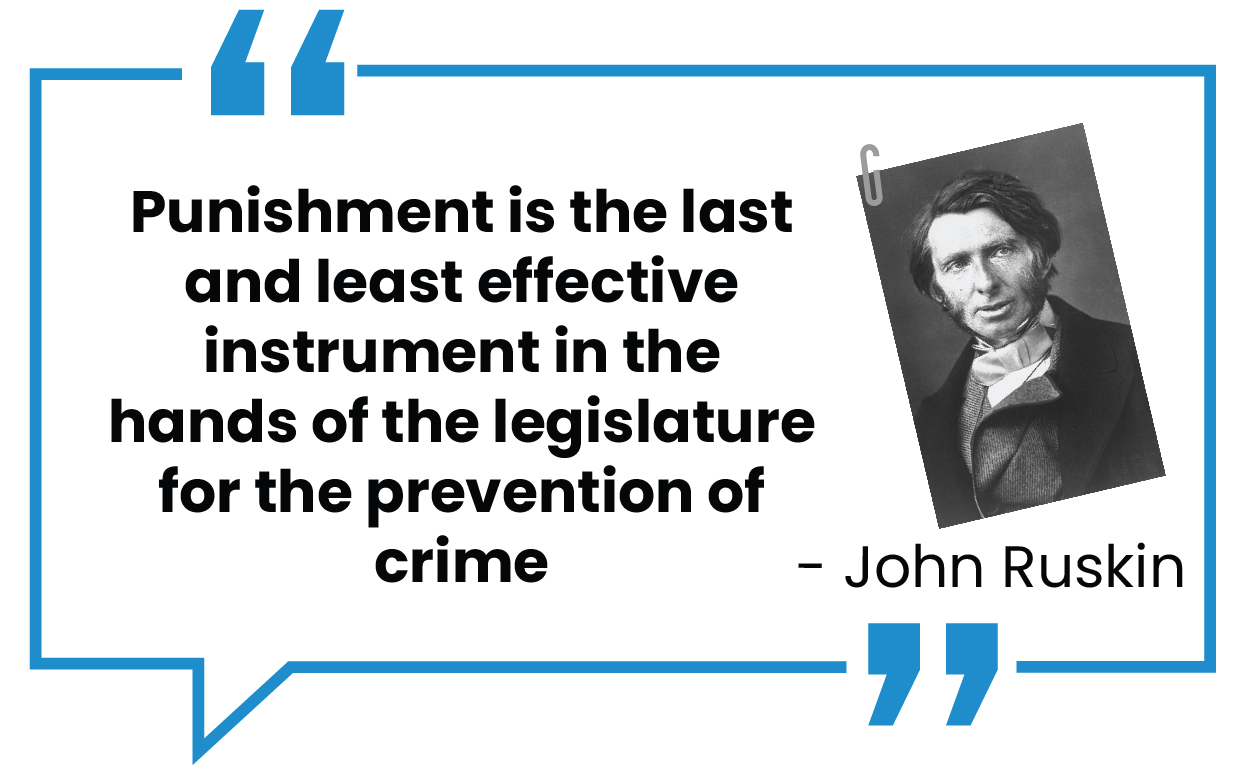Introduction
Recently, a devastating accident took place in Pune where a luxury car being driven by a teenager, who belongs to an influential family, claimed the lives of two individuals. The Juvenile Justice Board in this case granted bail to the teenager and impose a relatively lenient penalty. This raises the ethical concerns associated with disparity in punishments.
Different Stakeholders involved in Punishment and ethical concerns
Stakeholders | Role/Interests |
Victim | Expects fairness in trial, seeks justice, reassure security, and want harsh punishment for offender. |
Offender | Concerned with fair treatment, expect proportionality of punishment, reform his/her conduct, and rehabilitate in the mainstream society, |
Society | Reduction in crime, public safety, upholding social moral values, and dignified living. |
Government | Exemplify punishments for deterring crime, maintaining law and order, ensuring fairness in legal procedures and punishment. |
Judiciary | Delivering fair and impartial punishment, ensuring proportionality to the crime committed, restoring balance in the society and promote moral good. |
Different Philosophies of Punishment and Associated Ethical Dilemmas
- Deterrence: Deterrence theory suggests that the threat of punishment discourages crime. General deterrence targets the public, while specific deterrence focuses on preventing reoffending by those already punished.
- Associated Dilemma: The emphasis on deterrence can lead to harsh punishments, potentially overshadowing rehabilitation, and restorative justice.

- Incapacitation: It focuses on removing and restricting the offender from the society to prevent commission of future crimes.
- Modern prison has become the means by which offenders are isolated from the society so that they can no longer harm members of public or commit crimes. The most extreme and severe form of incapacitation is capital punishment.
- Associated Dilemma: This approach raises concerns about human rights, potential for abuse, and the efficacy of long-term incarceration in preventing reoffending.
- Retribution: It says that aim of punishment is to right the wrong rather than to control or prevent crime and nature of punishment is based on the severity of the offence such as in Indian Penal Code.
- Associated Dilemma: As an effective punishment, retribution has been criticized as being overly rigid, disproportionate and limited in its capacity to change societal behaviour.
- Restoration: Restorative Justice holds that punishment should aim to restore the harm caused to the victim and the community by the offender.
- Associated Dilemma: While promoting healing and reconciliation, restorative justice may not be suitable for all crimes or offenders, and it can often be seen in conflict with victim's perception of justice.
- Rehabilitation: Rehabilitation is the ideology of helping individuals who have committed crimes change their behavior through interventions, treatment, therapy, education, and training in order to help them reenter society.
- Associate dilemma: National fiscal restraints, public demand for harsher sentences, and a crime-control ideology focused on suppression over prevention, oppose treatment and rehabilitation concepts.
Ethical issues in Indian Punishment System

- Bias: One concern raised with present legal system is that it is biased against poor and marginalized, who are often unable to afford legal representation.
- NCRB data on Prison Statistics India 2022 reveals that the total number of undertrial prisoners from SC and ST communities is relatively higher.
- Corruption: This results in situation where justice is often delayed or denied.
- Non-accountability: India's culture of reconciliation can sometimes lead to a reluctance to punish offenders, where offenders are not held accountable and can contribute to a breakdown in social order.
- Disparity in sentencing: A clear policy or legislation for sentencing is absent in Indian legal system and sentencing has become judge-centric, resulting in disparities in sentencing for same crime.
- Capital punishment: Ethical dilemmas associated with capital punishment revolve around right to life, empathy, conscience, moral values etc.
- Custodial torture: Many cases of custodial torture undermine the principle of "innocent until proven guilty" and violates accused's right to dignity and a fair trial.
- Arbitrary punishments: For example, the offence of assault or using criminal force carries a punishment of three months, while 'flying a kite dangerously' can lead to a prison term of two years.
Way Forward
- Clear Sentencing Policy: There is a need for a clear sentencing policy to address disparities in sentencing.
- Supreme Court has noted that a judge can never have unrestrictive and unbridled discretion, based upon his conscience formed through his understanding of the society, without there being any guidelines in awarding a sentence.
- Justified punishment: It requires showing that a crime makes the offender eligible for coercive treatment and that the benefits of such punishment outweigh its costs.
- Rationalize punishments: Revision of laws presents an opportunity to rationalize punishments, ensuring they are proportionate and align with the object of criminalization.
- Impact assessments: Legislative process should incorporate pre-legislative tests and impact assessments to ensure enforceability, proportionality, and reformation.
- Rehabilitation: A rehabilitation approach can be useful in restoring the balance between retribution and restoration of offenders.
Check your ethical aptitudeA car accident occurred in the city of Delhi in India in which two employees of a local grocery store died. In this case, the luxury car involved in the accident was being driven by teenager son of an influential real estate businessman. Also, the person driving the car was under the influence of alcohol. On hearing the case, the court immediately granted bail to the accused person with a warning while the family of the teenage driver tried to pin the blame on family driver, offering him money. Later, during investigation, it was found that doctors who conducted DNA testing replaced the teenage driver's sample with another person's DNA samples. This demonstrated the influence of the family and tampering of the evidence. On the basis of the case study answer the following questions:
|



